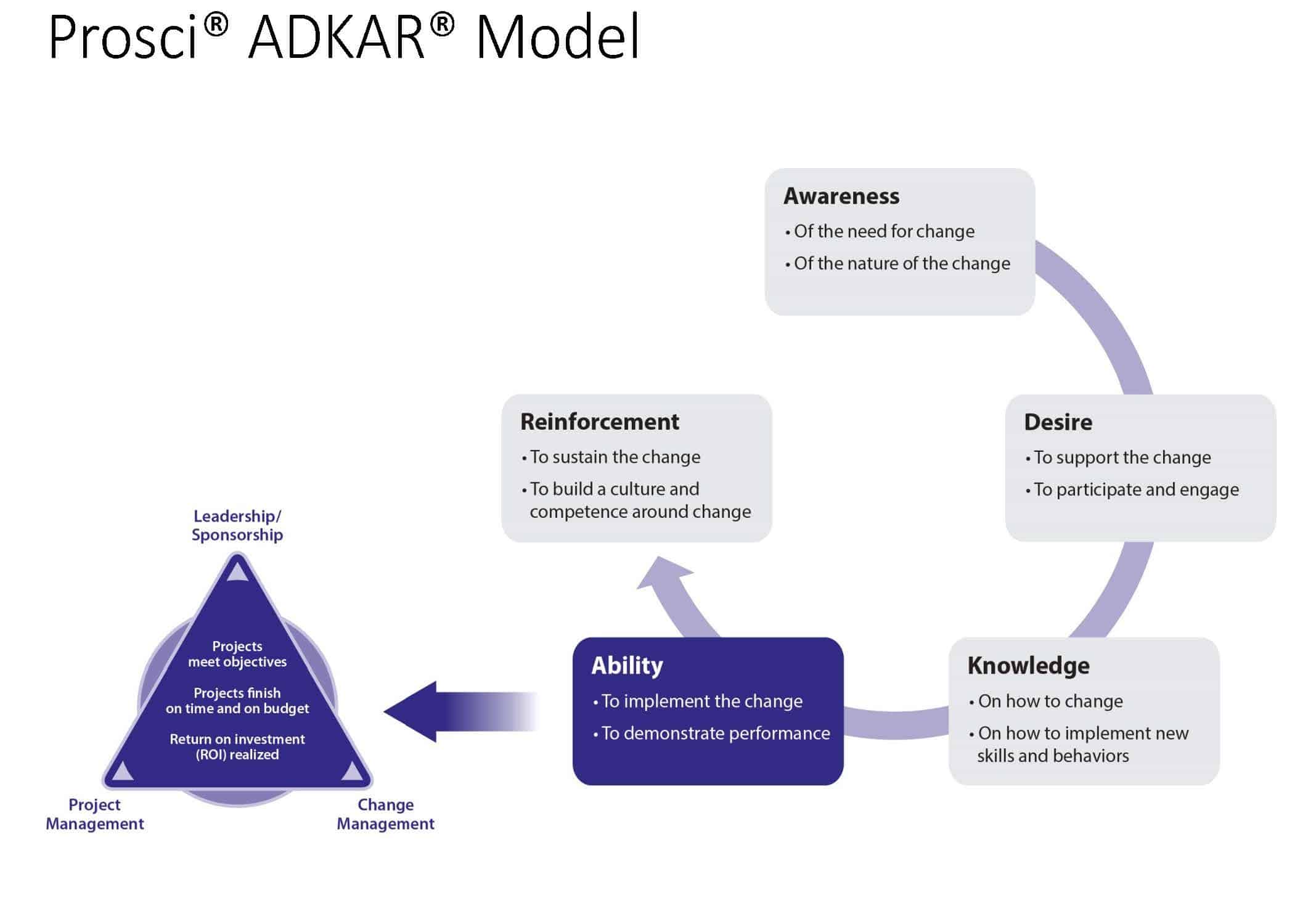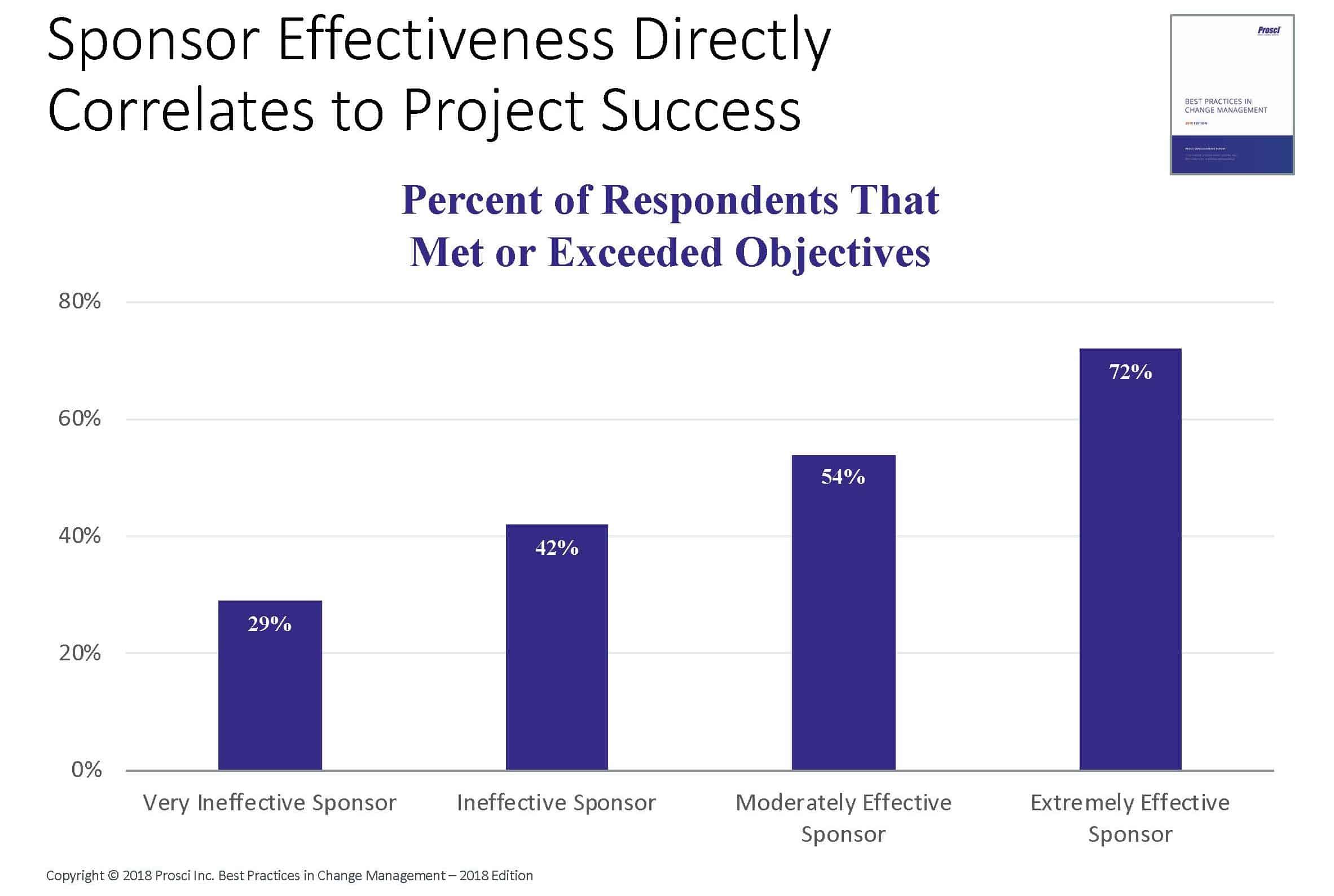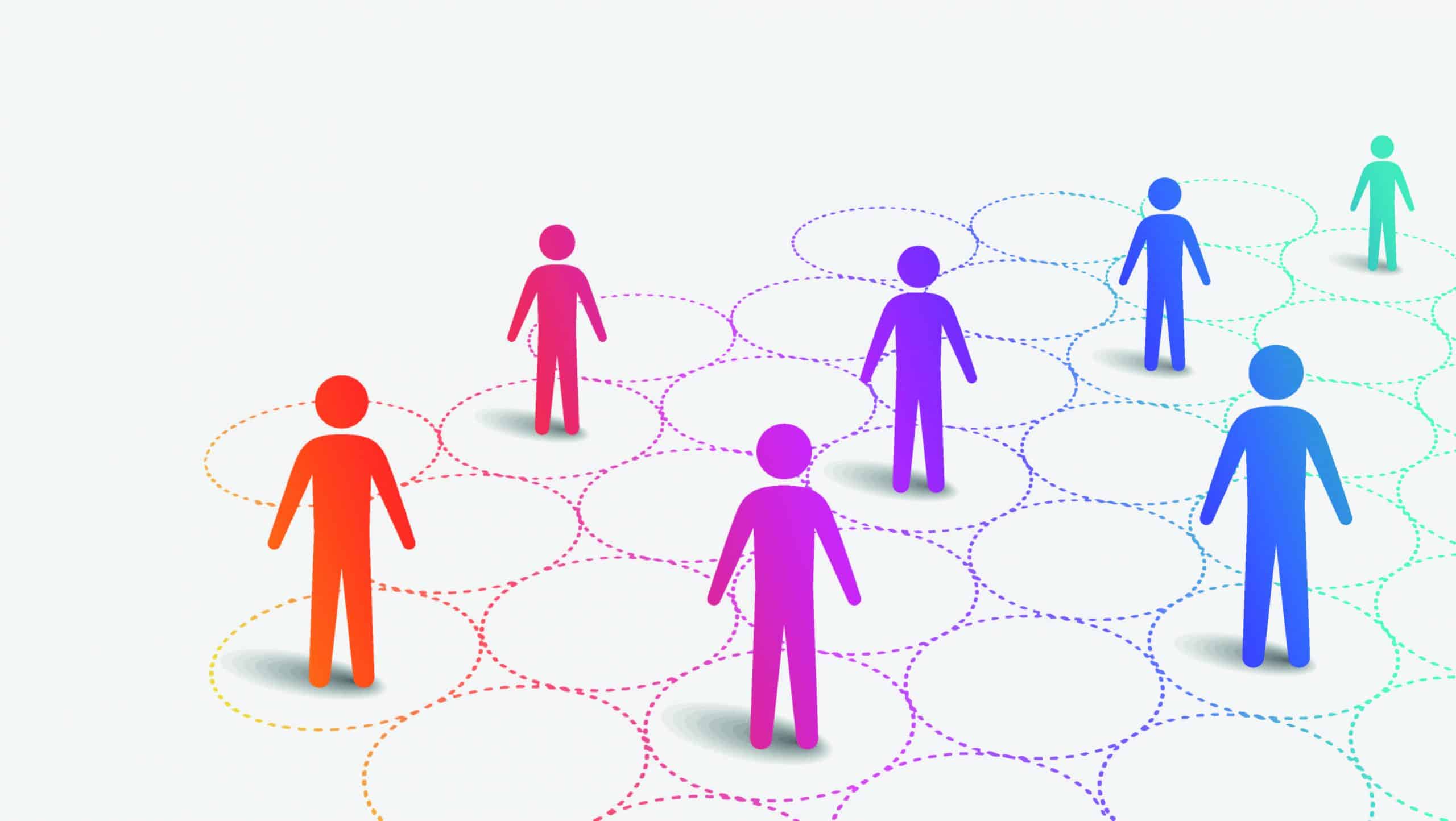Stay-at-home orders are being lifted across our nation, and organizations are now experiencing or planning for repopulation. Our in-house change management experts, Rebecca Sistruck & Lindsey Walker discuss their thoughts and recommendations on various repopulation strategies, including the ADKAR Methodology and its support of change management. They share their advice on repopulating with employees’ best interests in mind, along with the importance of leadership and sponsorship during the entire process. Lastly, they share tips for keeping the office culture you’ve worked so hard to grow and develop in place during these uncertain times.
WHAT IS THE ADKAR MODEL? CAN YOU EXPLAIN THE ADKAR METHODOLOGIES AS IT RELATES TO CHANGE MANAGEMENT?
ADKAR is a Prosci Change Management methodology that models an individual moving through five stages of change: Awareness, Desire, Knowledge, Ability, and Reinforcement. The stages are sequential and support successful change management strategies. ADKAR is a communication framework, diagnostic tool and corrective action. These building blocks correlate individual change impact back to a structured change management approach. When we are able to identify and assess where individuals fall within these building blocks, we can then develop a comprehensive Change Management plan. ADKAR supports plans that focus on resistant employees, exposes gaps and alignments within the program for each group, and provides the opportunity to achieve desired business results.

HOW DO WE REINFORCE AND ENCOURAGE BEHAVIORAL CHANGE IN THE WORKPLACE AND ENSURE PEOPLE ARE FOLLOWING RULES AND GUIDELINES AS WE REPOPULATE? WHAT CHARACTERISTICS DO WE WANT TO SEE?
The ADKAR model and a variety of assessment methods such as focus groups and survey tools can provide the baseline for understanding the drivers of why people may or may not be complying. Often there are personal belief systems in place that compel individuals to comply. Characteristics such as empathy and respect for each other’s opinion and perspectives is a baseline for behavioral change.
Through Little’s own office repopulation efforts we have learned that its successes and failures are largely tied to motivation for personal benefit. Individuals must believe their organization is looking out for both their life and work best interests. In addition, making employees’ capacity to stay connected to the greater community’s safety, health, and well-being is paramount.
EXPLAIN THE IMPORTANCE OF LEADERSHIP AND SPONSORSHIP DURING CHANGE.
Procsi has identified that the greatest contribution to a successful change initiative is “active and visible executive sponsorship.” Leadership can take on many different roles within a successful change management effort: from a primary sponsor, general sponsor, stakeholders, program team, managers and supervisors, and the change management team. At varying scales, these individuals must visibly participate throughout the initiative, communicate their support, promote the change taking place and form a coalition of supporters.
Frontline leaders who directly influence and manage teams have the opportunity to help support strategic initiatives but also can be an advocate for their employees. Employees are more likely to express their own personal challenges with their direct managers as they look for direction or support dealing with balancing work re-entry and other blended areas of their life. Trust and relationship building between leader and employee may be more complex but will be required as we navigate this transitional time of re-entering the work environment.

As Change Management practitioners and advocates, we are here to support leaders through change initiatives to enable them to lead through the change and achieve their desired results. This support comes by providing coaching, training and access to tools and activities for both the leader and employees. Change management is a partnership between organizational leadership and the change management practitioner throughout the initial journey and through the completion of a specific project.
HOW DO WE ENSURE WORKPLACE CULTURE STAYS IN PLACE THROUGHOUT REPOPULATION AND DURING TIMES OF CHANGE?
COVID-19 and an extended working-from-home experience have tested organizational processes and culture. While working from home or a remote location allows employees to structure their day and select their desired work “outfit,” it also demands an increased pressure on coordination and yearning for socialization and connection. Physical offices depict an organization’s culture but also provide an environment for all individuals to reside within the same walls. Working away from the same environment has either been a trial or fortification of the organization’s culture.
Fortified, as described by Merriam Webster Dictionary, is to improve or exchange through the addition of one or more ingredients. COVID-19 has added many “new” ingredients to what an organization must either tackle or succumb. Organizations and employees alike, have been faced with not only a change of work location but also childcare, health, anxiety and now re-populating the same environment but under quite different circumstances and measures. This is the time to acknowledge the strides your organization has achieved while also recognizing opportunities for change in order to continue to test and fortify the heart of your organization.
If you haven’t already, you can read parts 1 and 2 of this series here.

